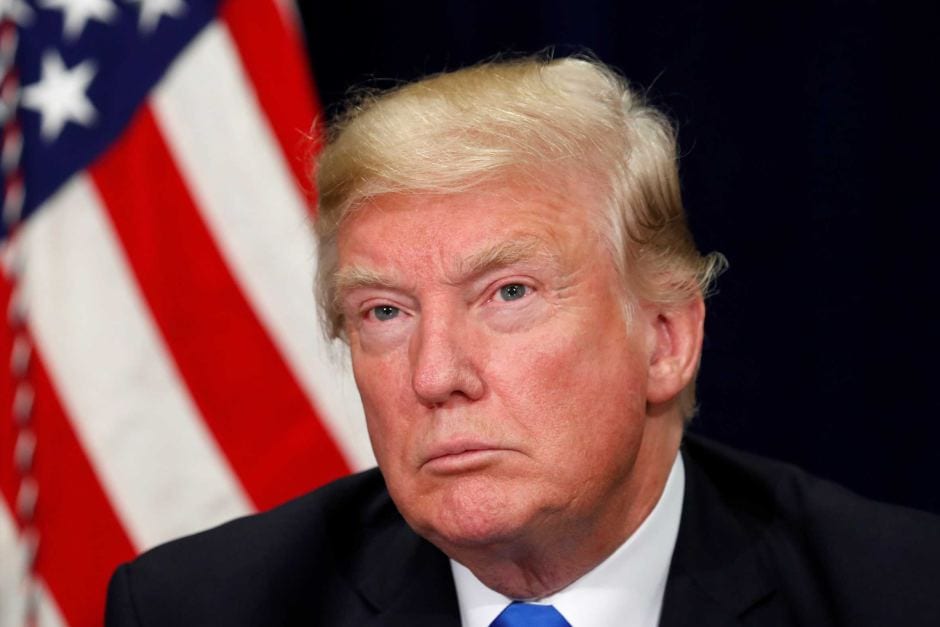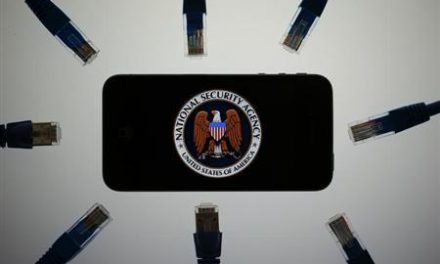With the clock ticking on a U.S. military departure from Syria, the U.S. government must salvage what it can to protect only the most important American interests—and even that may be a tall order.
BRETT MCGURK, Carnegie Endowment for International Peace
On Dec. 17, Secretary of State Mike Pompeo asked for an important call with me and a few other senior State Department officials; I took the call from the U.S. Embassy in Iraq, where I traveled often to help manage America’s fight against the Islamic State. I was there to walk through plans with Iraq’s new government to ensure that our gains in that fight would endure. We’d come a long way from only four years earlier, when the Islamic State was at the gates of Baghdad: Today, according to the United Nations, Iraq is safer than at any time since the U.N. Assistance Mission for Iraq began keeping track six years ago.
These achievements came thanks to the dedication of America’s fighting partners on the ground — Iraqi security forces, Kurdish peshmerga, Syrian opposition fighters and the Syrian Democratic Forces (SDF) — all of whom have paid a dear price in blood.
Key to these gains has been the small and highly effective American military presence in Syria. This mission began in 2015 and has helped deny the Islamic State’s ability to plan and launch attacks from Syria or resurge back into Iraq. It is sustainable without an over-commitment of U.S. resources or Americans directly engaged in day-to-day fighting. They are enabling a local force, the SDF, now a diverse group of roughly 60,000 fighters, including Arabs, Kurds and Christians, to reclaim Syrian cities and towns from the Islamic State. The SDF has suffered thousands of casualties. Until this past week, two Americans had died in combat in Syria. (Four were killed Wednesday in a suicide bombing claimed by the Islamic State — the first of its kind against our forces in Syria — coinciding with uncertainty in Washington about the mission.)
During the December call, Pompeo informed us that there had been a sudden change in plans: President Trump, after a phone conversation with his Turkish counterpart, planned to declare victory over the Islamic State and direct our forces to withdraw from Syria.
I returned to Washington immediately to help mitigate the fallout from this decision, particularly among our coalition partners, all of whom we had just assured — on instructions from the White House — that we had no intent to leave Syria anytime soon: National security adviser John Bolton had declared that we would stay in Syria “as long as the Iranian menace continues throughout the Middle East.” Defense Secretary Jim Mattis and I had just met coalition partners to confirm commitments into 2020.
My counterparts in coalition capitals were bewildered. Our fighting partners in the SDF, whom I had visited regularly on the ground in Syria, expressed shock and then denial, hoping Trump would change his mind. They also insisted on continuing their fight against the Islamic State and were advancing at that time on terrorist strongholds in eastern Syria.
I soon concluded that I could not effectively implement these new instructions and, on Dec. 22, submitted my resignation.
The president’s decision to leave Syria was made without deliberation, consultation with allies or Congress, assessment of risk, or appreciation of facts. Two days after Pompeo’s call, Trump tweeted, “We have defeated ISIS in Syria.” But that was not true, and we have continued to conduct airstrikes against the Islamic State. Days later, he claimed that Saudi Arabia had “now agreed to spend the necessary money needed to help rebuild Syria.” But that wasn’t true, either, as the Saudis later confirmed. Trump also suggested that U.S. military forces could leave Syria within 30 days, which was logistically impossible.
Worse, Trump made this snap decision after a phone call with Turkish President Recep Tayyip Erdogan. He bought Erdogan’s proposal that Turkey take on the fight against the Islamic State deep inside Syria. In fact, Turkey can’t operate hundreds of miles from its border in hostile territory without substantial U.S. military support. And many of the Syrian opposition groups backed by Turkey include extremists who have openly declared their intent to fight the Kurds, not the Islamic State.
Trump’s latest proposal, issued via tweet, for a 20-mile safe zone — which Erdogan saysTurkey will establish — similarly seems to have been made with no process or analysis. This area would encompass all Kurdish areas of eastern Syria. There is no force ready to take over, nor time to build one, as American troops prepare to leave. And entry of Turkish-backed opposition forces would likely displace thousands of Kurds, as well as threaten vulnerable Christian communities interspersed in these areas.
The strategic consequences of Trump’s decision are already playing out: The more Turkey expands its reach in Syria, the faster our Arab partners in the region move toward Damascus. It’s not a coincidence that Bahrain and the United Arab Emirates reopened embassies there shortly after Trump said we were leaving. These countries, as well as Saudi Arabia, Egypt and Jordan, believe that engaging Damascus can help dilute Russian, Iranian and Turkish influence in Syria, and they are discounting contrary views from Washington. The SDF, recognizing that it may soon be on its own and surrounded by hostile forces, has accelerated its talks with Bashar al-Assad’s regime. Turkey, a NATO ally, turned to Russia within days of Trump’s decision, dispatching senior officials to Moscow to work out next steps in Syria. Israel, our closest ally in the region, confronted a new reality with America soon absent from the field in Syria. Only Russia and Iran hailed Trump’s decision. Whatever leverage we may have had with these two adversaries in Syria diminished once Trump said we would leave.
These trends will worsen if the president does not reverse course: Our partners will stop listening and make decisions that run contrary to our interests. Our adversaries will play for time, knowing the United States is on its way out. The Islamic State and other extremist groups will fill the void opened by our departure, regenerating their capacity to threaten our friends in Europe — as they did throughout 2016 — and ultimately our own homeland.
Ideally, Trump will halt any withdrawal until he receives accurate appraisals of risks, the status of the Islamic State and the feasibility of Turkey, or anyone else, replacing us. To ask the Pentagon to design and execute a withdrawal plan absent such an assessment is folly. It is not enough for senior officials to walk back or place conditions on the decision. That must come from the president.
Absent this wiser but unlikely alternative, U.S. officials will try to suggest that the decision doesn’t matter. In recent weeks, they have argued that all our goals in Syria — including the ejection of Iran and political change in Damascus — can still be met, despite Trump saying that Syria is worth but “sand” and “death” and that Iran’s leaders “can do what they want” there. This disconnect between ambitious objectives stated by senior U.S. officials and Trump’s own views to the contrary is further undermining American credibility.
A more realistic Syria policy must account for the following hard truths:
First, we are leaving. It may be in six months, four months or less, but Trump has made clear repeatedly that he wants out. The longer this fact is resisted or described as but a difference in tactics, with our strategy unchanged, the worse the risk of an embarrassing exit, attacks against U.S. forces and wholesale abandonment of the SDF with no realistic planning for the aftermath. The focus now must be on protecting our military and getting out safely; asking our small force to do more than that will increase risk as we withdraw.
Second, Assad is staying. This fact is now priced into the thinking of our regional partners, including Saudi Arabia and Israel, which are as hard-line on Iran as anyone in Washington but understand that without us, any chance of upending this mass-murdering dictator, propped up by Iran and Russia, is a pipe dream.
Third, only the SDF provides stability in the areas that once made up the Islamic State in northeast Syria. Its forces cannot be replaced. And with America leaving, it will need a new benefactor, or else risk fracturing and opening a vacuum into which the Islamic State can resurge. To maintain stability, the SDF may have no choice but to reach accommodation with Damascus to come under the umbrella of the Syrian state. This unfortunate outcome may be necessary to avoid a strategic and humanitarian debacle.
Fourth, on Syria, Turkey is not a reliable partner. The Syrian opposition forces it backs are marbled with extremists and number too few to constitute an effective challenge to Assad or a plausible alternative to the SDF. The areas of Syria that Turkey ostensibly controls, such as Idlib province in the northwest, are increasingly dominated by al-Qaeda. The United States can help Turkey protect its border, but entry of the Turkish military and Turkish-supported opposition fighters into SDF areas of northeast Syria — as is now being discussed — would precipitate chaos and an environment for extremists to thrive.
So U.S. objectives in Syria should be narrowed to mitigating the risk of an Islamic State resurgence and preventing Iran from fortifying a military presence that threatens Israel. The former is best achieved by ensuring that the SDF remains intact and obtaining ongoing access to airspace through deconfliction with Russia; the latter by supporting Israel in what it has recently acknowledged to be a precise air campaign against Iranian threats in Syria.
These narrow objectives would be unsatisfying for those with greater hopes for Syria. But those hopes are dead. With the clock ticking on an American departure, we must salvage what we can to protect only the most important American interests — and even that may be a tall order.
The irony is that defeating the Islamic State is what the president identified as his goal from the beginning. In 2016, he vowed to “knock the hell out of ISIS.” His recent choices, unfortunately, are already giving the Islamic State — and other American adversaries — new life.
This article was originally published by the Washington Post.



















